|
# # # # At the end of each month the SoPD writes a post which provides an overview of some of the major pieces of Parkinson’s-related research that were made available during June 2021. The post is divided into 10 parts based on the type of research:
# # # # |
So, what happened during June 2021?
In world news:
June 3rd – The Juno spacecraft performed its only flyby of Jupiter’s moon Ganymede – the first flyby of the moon by any spacecraft in over 20 years (Click here to read more about this).
June 10th – Researchers from Toshiba’s UK laboratory in Cambridge successfully sent quantum information over 600-kilometer-long optical fibers, creating a new distance record and paving the way for large-scale quantum networks that could be used to exchange information securely between cities and even countries (Click here to read more about this).
June 11th – ‘My God, I’m in a whale’s mouth’: A New England lobsterman named Michael Packard found himself in the mouth of a humpback whale off the coast of Cape Cod. He was spat out half a minute later (Click here to read more about this).
June 23 – The New Zealand Black caps cricket team won the 2019–2021 ICC World Test Championship (Click here to read more about this).
June 29 – The number of vaccinations administered worldwide against the COVID-19 pandemic exceeded 3 billion (a truly remarkable achievement)
In the world of Parkinson’s research, a great deal of new research and news was reported:
In June 2021, there were 1,058 research articles added to the Pubmed website with the tag word “Parkinson’s” attached (6,517 for all of 2021 so far). In addition, there was a wave to news reports regarding various other bits of Parkinson’s research activity (clinical trials, etc).
The top 4 pieces of Parkinson’s news
1. The Aducanumab/Aduhelm approval
Not really Parkinson’s related, but it could have major implications for future clinical research in the field of neurodegenerative conditions: The FDA approved Biogen’s experimental therapy Aducanumab (now Aduhelm) for the treatment of Alzheimer’s because it “is expected that the reduction in amyloid plaque will result in a reduction in clinical decline”. The approval was based on ‘surrogate endpoints’ as opposed to evidence of clinical efficiency. The regulator made this controversial move conditional on Biogen having 9 years to conduct Phase 4 ‘post-marketing’ studies to demonstrate actual efficacy (Click here, here and here to read more about this).
2. Anavex clinical trial presents encouraging results
Anavex Life Sciences announced that their Sigma1 receptor agonist ANAVEX®2-73 (also known as Blarcamesine) improved both cognitive and motor symptoms in a Phase 2 double-blind, placebo-controlled clinical trial in 132 people with Parkinson’s Disease Dementia (Click here to read more about this and click here to read a SoPD post on this topic)

3. BlueRockers start transplanting
Stem cell biotech company BlueRock Therapeutics announced that the first participant in their Phase I cell transplantation clinical trial of stem cell-derived dopamine neurons (called MSK-DA01) has been transplanted. Nine additional participants will be transplanted and evaluated over 2 years. Safety will be the primary endpoint for the study (Click here to read more about this).
4. Launch of a potential PD MAMS project
The Edmond J. Safra Foundation awarded £1.4 million to fund the setting up of the Accelerating Clinical Treatments for Parkinson’s Disease project – a Multi-Arm, Multi Stage clinical trial platform to rapidly accelerate the search for disease modifying therapies for Parkinson’s (Click here to read more about this and click here to read a SoPD post about it).
Articles of general interest
- How genetic testing can help advance clinical trials for Parkinson’s from the Parkinson’s Foundation (Click here to read more about this).
- Interesting overview of the evolution of the market for central nervous system therapies (Click here to read more about this).
- Very easy to read review of Parkinson’s: we don’t have a cure yet but treatments have come a long way (Click here to read more about this).
- The Agony and the Ecstacy of Deep Brain Stimulation Surgery by Parkinson’s advocate Ben Stecher (Click here to read more about this). And below is a before and after interview of Ben:
Basic biology news
- New biorxiv manuscript presents the transcriptional profiling dopamine neuron nuclei from postmortem human SNpc of both Parkinson’s & matched controls; 10 distinct subpop.s, 1 primate specific; Impressive: 200K high-quality nuclei sampled (~3K per individual); Interesting: 1 subtype (AGTR1+) is highly susceptible to degeneration, + enriched for expression of genes associated with Parkinson’s; Also exhibits the strongest up-regulation of TP53 & downstream targets; “selective enrichment of expression of genes associated with Parkinson’s genetic variants in the highly vulnerable AGTR1 cells suggests that the pathways nominated by common variant studies may act cell-autonomously in these cells to influence neurodegeneration”; One dopamine subpop. (CALB1+ & GEM+) seems to be rather robust in Parkinson’s cases (Click here to read more about this).
- New paper explores induced α-synuclein aggregation in human iPSC-derived dopamine neurons (using fibrils generated de novo or amplified from brain homogenates from Parkinson’s or MSA cases); DJ-1-/- enhances fibril-induced aggregation & cell death (Click here to read more about this).
- New medrxiv manuscript investigates the molecular landscape of Parkinson’s in samples of post-mortem human midbrains; Small RNA seq, transcriptomics, & proteomics analysis; Strong enrichment of pathways related to inflammation & immune response; Interesting that chitinase-3-like-protein 1 (CHI3L1; aka YKL-40) popped up in this analysis; Tissue from 13 Parkinson’s & 10 control cases; Significant differential expression of the valid miRNA-mRNA interacting pairs of miR-218-5p/RAB6C, and miR-369-3p/GTF2H3 (Click here to read more about this).
- New paper presents a broad survey of phosphatases in terms of their ability to regulate Parkinson’s-associated LRRK2 phosphorylation in cells, revealing several PP2A subunits & confirming PP1 as regulators (Click here to read more about this).
- Aggregation of Parkinson’s-associated α-syn can proceed via droplet condensation. New research finds that antimicrobial peptide LL-III interacts with both monomers & condensates of a-syn leading to stabilization of the droplet, preventing fibrillar state (Click here to read more about this).
- New biorxiv manuscript presents data that dopamine metabolite DOPAL initiates α synuclein-mediated impaired proteostasis in neuronal projections that may lead to enhanced vulnerability in Parkinson’s (Click here to read more about this).
- Researchers report that Parkinson’s-associated LRRK2 R1441G mutation shows macroautophagy-mitophagy dysregulation concomitant with endoplasmic reticulum stress (Click here to read more about this).
- Using Parkinson’s patient-derived dopamine neurons, researchers report that the triplication of α-synuclein locus induces distinctive firing pattern by impeding D2 receptor autoinhibition (Click here to read more about this).
- New research reports that Parkinsonism-associated FBXO7 cooperates with the BAG6 complex in proteasome function & determines the subcellular localization of this complex (Click here to read more about this).
- More data on differential seeding & propagation efficiency from the periphery to the CNS of Parkinson’s-associated α-synuclein strains generated under different conditions; BUT α-Syn-injected mice did not develop severe motor deficits post injection (Click here to read more about this).
- New research finds that DAT & COMT differentially regulate specific aspects of reward-based behavioral flexibility; BUT found no evidence that either do this by influencing the balance of reinforcement learning strategies or shaping trial-by-trial learning (Click here to read more about this).
- Does Parkinson’s have a ringer? New research reports the mutations in Drosophila homolog of human tubulin polymerization promoting protein (TPPP) – called Ringer – “recapitulate some of the salient features of human Parkinson’s” (Click here to read more about this).
- New research reports that damage-induced mitophagy is slowed in cells without Miro1; Miro1 is required for recruiting Parkin trigger mitophagy; Loss of Miro1 in vivo = activation of integrated stress response (Click here to read more about this).
- New paper provides insights into the spatiotemporal propagation of Parkinson’s-associated α-synuclein pathology in the CNS of a rodent model of α-synucleinopathy following origin in periphery (Click here to read more about this).
- α-Helical peptidic scaffolds to target Parkinson’s-associated α-synuclein toxic species with nanomolar affinity (Click here to read more about this).
- Useful new tool: Ultra-precise laser stimulation (UPLaS) delivers precise & noninvasive stimulation to submicron regions of mitochondrial tubular structure; UPLaS-induced mitoCa2+ oscillations induce PINK1 accumulation & Parkin recruitment on mitochondria (Click here to read more about this).
- Can cellular stress increase MHC-I expression in dopaminergic neurons & induces autoimmune activation in Parkinson’s? New preclinical data suggests yes (Click here to read more about this).
- New biorxiv manuscript suggests α–syn is most enriched protein in Parkinson’s & MSA extracts compared to controls, & they share striking overlaps in their proteomes; Other fibrillization–prone protein candidates not found (Click here to read more about this).
- New research suggests that Parkinson’s-associated PINK1 & parkin drive organism-wide patterns of heteroplasmy; Evidence of a causal link between proteotoxicity, mitophagy, & mtDNA mutation levels in neurons (in C elegans – click here to read more about this).
- New biorxiv manuscript presents transcriptional analysis of peripheral memory T cells & reveals Parkinson’s-specific gene signatures; Diagnostic & therapeutic implications? (Click here to read more about this).
- New biorxiv manuscript explores multi-modal & dynamic Tau interactomes & sheds novel insights into Tau’s role in neuronal function & disease-related processes with potential therapeutic targets to block Tau-mediated pathogenesis (Click here to read more about this).
- New biorxiv manuscript explores subcellular proteomics of dopamine neurons in the mouse brain & reveals axonal enrichment of proteins encoded by Parkinson’s-linked genes; APEX2 labeling & mass spec-based proteomics of axonal & somatodendritic compartments of dopamine neurons in mouse brain reveals proteins encoded by DA neuron-enriched genes & Parkinson’s-associated genes (highlighting PAK/STK39 & Syt-17) are preferentially localized in striatal axons (Click here to read more about this).
- New paper indicates Parkinson’s-associated Pink1 mitochondrial proteome in drosophila is partially corrected with exercise; Proteomic analysis showed exercising Pink1-flies proteomic profile returns towards WT levels (Click here to read more about this).
- New biorxiv manuscript suggests iPSC-derived neurons from Parkinson’s patients with LRRK2-G2019S mutations (& isogenic controls) have shortened inter-spike intervals & increased rate of spontaneous calcium transient induction (Click here to read more about this).
- New biorxiv manuscript presents a double-hit Parkinson’s model (GBA & a-synuclein); “baseline a-syn burden is a prerequisite for a “snowball” effect to occur in the presence of lipid substrate accumulation & vice versa” (Click here to read more about this).
- New paper finds Parkinson’s-associated R1441G but not the G2019S mutation enhances LRRK2-mediated Rab10 phosphorylation in human peripheral blood neutrophils; Useful for patient stratification & target engagement studies (Click here to read more about this).
- New RT-QuIC-based data show that C-terminally truncated α-Syn species can distinguish Parkinson’s from dementia with Lewy bodies & “suggest diversity in α-Syn species across these synucleinopathies, which could play a role in disease progression” (Click here to read more about this).
- New study reports that the p.D620N mutation of VPS35 causes mitochondrial dysfunction & suggests a converging pathogenic mechanism among VPS35, PINK1 & Parkin in Parkinson’s (Click here to read more about this).
- Researchers report that “more complex combinations of transcription factors may be needed for proper regional specification of induced neuronal cells generated by direct lineage induction”; 6-factor combo induces midbrain dopamine neurons (Click here to read more about this).
- New paper presents an integrated network analysis approach that identifies potential novel drug candidates & targets for Parkinson’s; 10 drug candidates (6 FDA approved) & 9 differentially expressed drug-target genes (Click here to read more about this).
- New research investigates α-synuclein deposition in sympathetic nerve fibers in individuals with genetic forms of Parkinson’s; SNCA, DJ-1, LRRK2, or GBA mutations = substantial intraneuronal α-syn; Biallelic PRKN not so much (Click here to read more about this).
- Structural analysis of the full-length human LRRK2 reveals disease hotspots and key scaffolding elements (Click here to read more about this).
- New research finds BORCS6 is involved in the enlargement of lung lamellar bodies in Lrrk2 knockout mice (Click here to read more about this).
- 2-month-old A30P mice exhibit retarded gut motility & early molecular dysregulations in the myenteric plexus – long before motoric complications onset; Many dysregulated miRNAs found in the mice are reported to be changed in Parkinson’s (Click here to read more about this).
- Researchers from Denali Therapeutics present quantitative & high-throughput assays to measure LRRK2 levels/activity (phospho. of LRRK2 or Rab10); Detect sign. reduction in LRRK2 activity in carriers of missense variants in LRRK2 associated with reduced disease risk (Click here to read more about this).
- New paper reports robust accumulation of Parkinson’s-associated alpha-synuclein in rodent & human spinal cord injury AND it promotes inflammation & tissue loss; They also detected injury site iron deposition; Aberrant forms of α-synuclein are present chronically within the injured rodent spinal cord (W blot analysis); Male α-synuclein knockout mice exhibit improved neuron & axon sparing + reduced iron deposition & intraspinal macrophage accumulation after spinal cord injury; Despite protective effect, α-synuclein knockout mice had worse locomotor recovery after spinal cord injury (no sex diff.), likely due to dopamine deficiency; Treatment with the dopamine agonist SKF-81297 at 7days post injury transiently reversed the stepping impairment (Click here to read more about this).
- New research explores the crosstalk between astrocytes & microglia that can result in increased degradation of Parkinson’s-associated α-synuclein & Alzheimer’s-associated amyloid-β aggregates (Click here to read more about this).
- New biorxiv manuscript presents previously unknown associations & suggests novel mechanistic roles for rs12456492, RIT2, & SYT4 in the regulation of pH in the substantia nigra – implications for Parkinson’s? pH-eQTL effect not observed in females (Click here to read more about this).
- Dopamine neurons have slow “pacemaker” behaviour that helps maintain extracellular dopamine levels; New biorxiv manuscript suggests that TRPC3 and NALCN channels drive pacemaking in substantia nigra dopamine neurons (of mice – click here to read more about this).
- New biorxiv manuscript presents The FOUNdational Data INitiative for Parkinson’s Disease (FOUNDIN-PD). The team have produced a multi-layered molecular dataset involving 95 induced pluripotent stem cells (iPSC) lines at multiple timepoints during differentiation to dopamine neurons (Click here to read more about this).
- New report identifies 16 novel candidate genes associated with increased risk of developing late onset Parkinson’s; Mitochondria & oxidative stress (AIMP2, HMOX2, IMMT, MAN2C1, RHOT2, SLC25A39, TOMM22 – click here to read more about this).
- New report presents 14 isogenic cell lines for Parkinson’s-associated LRRK2 research, including N1437H, R1441C, Y1699C, G2019S & I2020T lines; also GTP binding null (T1348N), kinase dead (K1906M), & 2 LRRK2 knockouts (Click here to read more about this).
- New report provides novel insights into Parkinson’s-associated LRRK2 activation; They present multi-tiered analysis that helps to define the kinase domain of LRRK2 as a dynamic allosteric hub for activation (similar to Raf kinases – click here to read more about this).
- Rub-a-dub-dub, 50k compound went into a tub, And what do you think they found? A UPS7, UPS8 & UPS30 inhibitors, And all of them robustly bound. New research explores selective deubiquitinase inhibitors (Click here to read more about this).
- Using inter-protomeric & double-fusion (intra-protomeric) FRET biosensors, researchers identify Demeclocycline & Ro 90–7501 as potent inhibitors of Parkinson’s-associated alpha-synuclein toxicity in SH-SY5Y cells (Click here to read more about this).
- New research finds that Parkinson’s-associated α-synuclein uses its acidic C terminus to bind an alkaline patch on receptors such as LAG3 & amyloid precursor-like protein 1 (APLP1); Phosphorylation at serine 129 further enhances interaction (Click here to read more about this).
- New paper reports that truncation of the C-terminus of Parkinson’s-associated α-synuclein induces differential effects on DNA depending on the extent of the truncation (Click here to read more about this).
- Neonatal brain iron enrichment attenuates Parkinson’s-associated α-syn spreading after injection of preformed fibrils in mice; PFFs injection caused intrastriatal microglia accumulation, which was alleviated by iron in a dose-dependent way (Click here to read more about this).
- Researchers identify 38 genes that regulate cell-to-cell transfer of Parkinson’s-associated α-synuclein; Interesting impact on mitochondrial ΔΨm similar to recessive PD genes; They also use pharmacological validation to support the role of SLC30A3, ADAMTS19, POLR2A, POLR2B, & WEE1 as regulators of αSyn transfer – lots of interesting targets (Click here to read more about this).
- New biorxiv manuscript suggests that Parkinson’s-associated alpha-synuclein induces epigenomic dysregulation of glutamate signaling & locomotor pathways (Click here to read more about this).
- Lundbeck and Vernalis researchers report on the design/synthesis of Pyrrolo[2,3-d]pyrimidine-derived Leucine-Rich Repeat Kinase 2 (LRRK2) inhibitors (using a CHK1-derived crystallographic surrogate); New entrant for LRRK2-associated Parkinson’s? (Click here to read more about this).
Disease mechanism
- New study reports that Fyn knockdown (via micro-RNA) prevents levodopa-induced dyskinesia in a mouse model of Parkinson’s (Click here to read more about this).
- New biorxiv manuscript suggests Fyn kinase inhibition using AZD0530/Saracatinib improves recognition memory & reduces depressive-like behaviour in an experimental model of Parkinson’s (Click here to read more about this).
- New research presents LMK235, a small molecule inhibitor of HDAC4/5, that protects dopamine neurons against neurotoxin- & α-synuclein-induced degeneration in cellular models of Parkinson’s (Click here to read more about this).
- Pentraxin 3 secreted by human adipose-derived stem cells is reported to promote dopamine neuron repair in model of Parkinson’s (via the inhibition of apoptosis – click here to read more about this).
- Parp mutations protect from mitochondrial toxicity in models of Alzheimer’s; NAM-supplemented diet suppresses mitochondrial dysfunction & neurodegeneration in Aβ flies; Variants in human PARP1 predict risk of AD (Click here to read more about this).
- New report indicates that α-syn-targeted antisense oligonucleotides can reduce total α-syn & phosphorylated α-syn protein levels in a pre-formed fibrils mouse model of Parkinson’s, but may also have deleterious off-target effects not involving lowering of α-syn (Click here to read more about this).
- Loss of C9orf72 in microglia leads to non-cell-autonomous neuronal dysfunction; Causes defects in learning and memory in ALS/FTD & Alzheimer’s mouse models (Click here to read more about this).
- New biorxiv manuscript suggests sustained TREM2 stabilization accelerates microglia heterogeneity & beta amyloid pathology in a mouse model of Alzheimer’s; Reduced TREM2 proteolytic cleavage aggravates neuroinflammation (Click here to read more about this).
- Researchers present a bioinspired theranostic coordination polymer nanoparticles for intranasal dopamine replacement in Parkinson’s (Click here to read more about this and click here to read the press release).
- Complement component 3 (C3)+ astrocytes are increased in the midbrain of the intrastriatal α-synuclein PFF-injected mice; C3 secreted from astrocytes induces the degeneration of dopamine neurons; Implications for Parkinson’s (Click here to read more about this).
- New research indicates that systemic GLP-1R agonist treatment reverses mouse glial & neurovascular cell transcriptomic aging signatures in a genome-wide manner; Alzheimer’s-associated signature in microglia that arises from aging is reduced (Click here to read more about this).
- Ossianix Inc researchers have a biorxiv manuscript outlines delivery of a TrkB agonist antibody to the brain (using a TfR1 specific BBB shuttle) & demonstrates neuroprotection in a mouse model of Parkinson’s (Click here to read more about this).
- New research explores GBA1 gene therapy (rAAV9-GBA1) in both mice & primate models of Parkinson’s; GCase enhancement initiated alpha-synuclein clearance & neuroprotection of dopamine neurons (Click here to read more about this).
- Therapeutically viable generation of neurons with antisense oligonucleotide suppression of PTB – “generation of new neurons in the dentate gyrus of the aging brain can be achieved with a therapeutically feasible approach” (Click here to read more about this).
- GLP-1/GIP dual-receptor agonist DA5-CH inhibits the NF-κB inflammatory pathway & improves behavioural performance in the MPTP mouse model of Parkinson’s more effectively than the GLP-1 single-receptor agonist NLY01 (Click here to read more about this).
- Neuropore Therapies researchers publish preclinical data on NPT520-34; Their molecule, being targeted at Parkinson’s, may have 2 complementary actions: (1) increasing clearance of neurotoxic protein aggregates & (2) directly attenuating inflammation (Click here to read more about this).
Clinical research
- Researchers report frequency, distribution, & clinical manifestations of Lewy bodies are similar across racial groups in elderly (n= 81 of African American decent, 154 of Anglo-european decent; 4 longitudinal studies; 7 brain regions – click here to read more about this).
- Can patients receiving deep brain stimulation for Parkinson’s be post-operatively managed from the home by a home health nurse with no prior DBS experience? New paper presents results of a clinical trial exploring this (Click here to read more about this).
- Class I evidence that neuromelanin imaging of the substantia nigra & locus coeruleus is well-suited to mapping the neurodegeneration in Parkinson’s; SN neuromelanin pathology correlates with motor dysfunction, & in the LC is related to cognitive impairment (Click here to read more about this).
- Researchers assessed dietary intake using food frequency questionnaires & measured the plasma levels of 5 polyunsaturated fatty acids (PUFA) in 38 Parkinson’s patients; No differences in dietary total energy & lipid intake (Click here to read more about this).
- A new medrxiv manuscript presents an in-depth description of a new Parkinson’s case-control cohort from southern Sweden in which PLPP4 is identified as a potentially novel PD risk locus (Click here to read more about this).
- Results of a cross-sectional, case-control, observational study demonstrate that skeletal muscle wasting is a complex multifactorial problem in Parkinson’s. Dietary strategies + physical exercise should be recommended, especially to females (Click here to read more about this).
- A new medrxiv manuscript suggests that RIC3 variants are not associated with Parkinson’s in large European, Latin American, or East Asian cohorts (Click here to read more about this).
- New research suggests that proteins associated with neurotransmitter secretion, synaptic plasticity, & endolysosomal autophagy might serve as biomarkers related to α-synuclein proteostasis in Parkinson’s & dementia with Lewy bodies; CSF protein profiles were analysed across 2 monocentric cohorts with α-synucleinopathy (385 PD & 67 DLB patients – included 80 PD & 17 DLB cases with GBA1 variants); Patterns were more pronounced in DLB; Findings could be confirmed longitudinally (Click here to read more about this).
- Researchers find significantly increased macrostructural fiber cross section & a combination of fiber density + cross section metrics within the white matter corticospinal tract of individuals with tremor-dominant-Parkinson’s (vs healthy controls – click here to read more about this).
- New study presents an analysis of long-term exposure to specific PM2.5 components & Parkinson’s aggravation in New York State; Associations founds between the PM2.5 components organic matter & nitrate with PD aggravation (Click here to read more about this).
- Sobering: Under represented communities – a continent-wide survey of the availability of therapies & services for Parkinson’s in Africa; “PD-specific therapies + services are largely unavailable & unaffordable in most African countries” (Click here to read more about this).
- Curious case of oxybutynin-induced heatstroke in an individual with Parkinsons (Click here to read more about this).
- A Mendelian randomization study examined whether genetically predicted urate levels may be causal in PD, and the authors conclude that the answer is no, and suggest that treatment to increase urate levels is unlikely to affect PD (Click here to read more about this).
- James Parkinson & his father both suffered from gout. Now new research asks if there could be an association between Parkinson’s treatment levodopa & gout through an analysis of the cases reported in the WHO pharmacovigilance database (Click here to read more about this).
- A bidirectional mendelian randomization study explores causal association between periodontitis & Parkinson’s; No evidence of genetic liability of periodontitis being associated with a higher risk of PD (or vice versa – click here to read more about this).
- Under represented communities – the challenges of diagnosing Parkinson’s in Kenya (Click here to read more about this).
- New study reports that cortico–cortical, cortico–subthalamic nucleus (STN), & STN–STN networks are differentially modulated by dopaminergic medication in Parkinson’s; Whole-brain networks & electrophysiological signatures may open up new targets for intervention (Click here to read more about this).
- New study finds an altered peripheral immune profile and a significantly higher neutrophil-to-lymphocyte ratio in 377 people with Parkinson’s (compared with 355 controls – click here to read more about this).
- New medrxiv manuscript suggests that polygenic risk scores, carrier status, & family history contribute independently & additively to the Parkinson’s risk (Click here to read more about this).
- New report on a nested case-control study finds risk of developing α-synucleinopathies (like Parkinson’s) are not associated with exposure to general anesthesia (Click here to read more about this).
- Assessing emergence of new symptoms among patient-reported experiences of daily living may provide a useful marker for tracking Parkinson’s progression; New medrxiv manuscript explores STEADY-PD3 data (Click here to read more about this).
- New medrxiv manuscript uses MRI data from the the Michael J Fox Foundation PPMI initiative to test a model of mapping the progression of brain atrophy over 1, 2 & 4 years in Parkinson’s (oligodendrocytes again – click here to read more about this).
New clinical trials
- New clinical trial registered: CuraSen Therapeutics have registered their study of CST-103 co-administered with CST-107 in 24 individuals with Parkinson’s having freezing of gait issues (CLIN-012); Completing Dec 2022 (Click here to read more about this).
- New clinical trial registered: Psilocybin, a naturally occurring psychedelic prodrug compound, will be assessed in a Phase 2 study involving 10 individuals with Parkinson’s & depression/anxiety; Single group assignment; Completes Dec 2022 (Click here to read more about this).
- New clinical study registered: Escape Bio has registered a no cost genetic testing program to determine if individuals carry the Parkinson’s-associated G2019S LRRK2 mutation (Click here to read more about this).
Clinical trial news
- New study provides Class IV evidence that, for individuals with Parkinson’s, subthalamic nucleus deep brain stimulation remains effective at treating motor complications 15 years after surgery; N=51 participants, 17.06 ± 2.18 years STN-DBS follow-up (Click here to read more about this and click here to read the press summary).
- Researchers IRLAB Therapeutics have published the results of 1st-in-human Phase I study to assess safety, tolerability, & pharmacokinetics of Pirepemat (IRL752), a cortical enhancer, in healthy volunteers; Being developed for falls in Parkinson’s (Click here to read more about this).
- Baseline differences in long-term survivors & non-survivors of the Colorado/Columbia Fetal Implant Trial; Variables to consider when selecting participants for future cell-based therapies for Parkinson’s
(Click here to read more about this). - The results of a new trial provides class III evidence that sport climbing is effective & feasible in individuals mildly to moderately affected by Parkinson’s; N=48 without experience in climbing, H&Y=2-3; 12-week sport climbing course (Click here to read more about this).
Conferences/lectures
- Really looking forward to the NECTAR 2021 meeting in Edinburgh in November. Really impressive line up of speakers/presenters – everyone in the field basically (Click here and here to learn more about this). There is also a public event exploring clinical trial participation (Click here to learn more about this).
- Registration is open for this year’s virtual Grand Challenges in Parkinson’s Disease symposium – the topic this year is “GBA1 and LRRK2: From genetic risk to the clinic” (Click here to read more about this)
- In parallel with the Grand Challenges meeting is the Rallying to the Challenge meeting for people with Parkinson’s, care partners and advocates, hosted by Cure Parkinson’s and Van Andel Institute (Click here to learn more about this).
- ‘Genetic markers and the progression of Parkinson’s’ is the topic to be discussing in a webinar on the 4th August, as part of a partnership between the Journal of PD, Cure Parkinson’s and Van Andel Institute (Click here to reserve your place).
- The World Parkinson’s Coalition has announced that the next WPC meeting which will be held in Barcelona is moving to 2023 (Click here to read more about this).
Other news
- Amyl Therapeutics closes €18.3 million Series A financing to help develop their amyloid fibrils specific technology platform named ClariTY, which targets misfolded proteins linked to progressive neurodegenerative conditions like Parkinson’s (Click here to read more about this).
- The US FDA rejected Verily Life Science‘s request to use its “Study Watch” to track changes in the motor symptoms of clinical trial subjects with Parkinson’s; FDA questioned whether the device can show if an intervention is having a meaningful effect (Click here to read more about this).
- Second milestone reached: Servier and Oncodesign announce the selection of a LRRK2 kinase inhibitor preclinical candidate as part of their collaboration targeting new treatments for Parkinson’s; Servier is hoping that the candidate will gain investigational new drug (IND) status during 2022; In addition, the collaboration’s research teams also identified other molecules that have ‘substantial’ follow-up potential (Click here to read more about this).
- Sumitomo Dainippon Pharma announced in March that they plan to begin US based clinical trials of iPS-derived dopamine neurons for cell transplantation in Parkinson’s in 2022 (Click here to read more about this).
- AbbVie snags another preclinical Parkinson’s program with $17M going to Caraway to license their program targeting TMEM175 for Parkinson’s (Click here to read more about this).
Review articles/videos
- Everything you ever wanted to know about postmortem studies of fetal transplantation grafts in Parkinson’s – the authors ask what lessons we have learned? (Click here to read more about this).
- A useful review of pharmacological modulators of small GTPases of Rho family & their potential utility in neurodegenerative conditions like Parkinson’s (Click here to read more about this).
- Exosomes: Are they innocent bystanders? Or critical culprits in neurodegenerative conditions like Parkinson’s? Researchers provide an overview of the field (Click here to read more about this).
- Living with Parkinson’s – a great interview:
- A useful short overview of gene therapy for GBA-associated Parkinson’s (Click here to read more about this).
- New review provides a comprehensive update on how early-onset autosomal recessive diseases are associated with an increased risk of a spectrum of late-onset neurodegenerative conditions (Click here to read more about this).
- Interesting short review of the potential effects of leukotriene receptor antagonist Montelukast in the treatment of neuroinflammation in Parkinson’s (Click here to read more about this).
- An informative advert from researchers at Herantis Pharma on protecting the proteome from Parkinson’s – discusses their research on CDNF-derived peptidomimetic compounds (xCDNF – click here to read more about this).
- A short review covering the research on astrocyte reprogramming as a potential means of treating Parkinson’s: Progress & challenges (Click here to read more about this).
- Interesting review exploring neurotrophic factors (like GDNF & CDNF) in Parkinson’s; Providing an overview of clinical trials, the open challenges still remaining, & how nanoparticle-mediated delivery to the brain could help (Click here to read more about this).
- A very thorough review of ALDH1A1-Positive nigrostriatal dopaminergic neurons & their role in motor control & Parkinson’s (Click here to read more about this).
- New review on the emerging role for Phosphoinositides in the pathophysiology of Parkinson’s (Click here to read more about this).
- Useful review of the molecular mechanisms of cell death in neurological conditions like Parkinson’s, Alzheimer’s & ALS (Click here to read more about this).
- “Janus-Faced” α-synuclein: A useful update on everything related to this Parkinson’s-associated protein (Click here to read more about this).
- New opinion article reviews the research exploring intermittent fasting in Parkinson’s; IF has “minimal side effects & is less restrictive than other commonly used dietary interventions” (Click here to read more about this).
- New review explores the complex interplay between astrocytes, microglia, & T lymphocytes in the pathogenesis of Parkinson’s (Click here to read more about this).
- A critical review the evidence against AIMP2 & its role in Parkinson’s pathogenesis; Their recommendations on experimental factors/approaches should be considered in future studies (Click here to read more about this).
- Useful review on the need to embrace complexity and rethink how we investigate protein aggregation in neurodegenerative diseases (Click here to read more about this).
- New review explores Growth differentiation factor 5 (GDF5) – a neurotrophic factor with neuroprotective potential for Parkinson’s (Click here to read more about this).
- Must read: a review of the status of disease modifying approaches in Parkinson’s (Click here to read more about this).
* * * * * * * * * * * *
And there it is, just some of the highlights from June 2021 – another very busy month of Parkinson’s research. Hopefully there will be bits and pieces of interest for everyone in the list. Much of the material used here was collected from the Science of Parkinson’s Twitter feed (and there is a lot more posted there each day).
Any thoughts/feedback would be greatly appreciated (either in the comments below, or contact me directly).
And now: on to July.
 All of the material on this website is licensed under a
All of the material on this website is licensed under a
Creative Commons Attribution 4.0 International License
You can do whatever you like with it!
EDITOR’S NOTE: The author of this post is an employee of the Cure Parkinson’s Trust, so he might be a little bit biased in his views on research and clinical trials supported by the trust. That said, the trust has not requested the production of this post, and the author is sharing it simply because it may be of interest to the Parkinson’s community.
The information provided by the SoPD website is for information and educational purposes only. Under no circumstances should it ever be considered medical or actionable advice. It is provided by research scientists, not medical practitioners. Any actions taken – based on what has been read on the website – are the sole responsibility of the reader. Any actions being contemplated by readers should firstly be discussed with a qualified healthcare professional who is aware of your medical history. While some of the information discussed in this post may cause concern, please speak with your medical physician before attempting any change in an existing treatment regime.
In addition, many of the companies mentioned in this post are publicly traded companies. That said, the material presented on this page should under no circumstances be considered financial advice. Any actions taken by the reader based on reading this material is the sole responsibility of the reader. None of the companies have requested that this material be produced, nor has the author had any contact with any of the companies or associated parties. This post has been produced for educational purposes only.


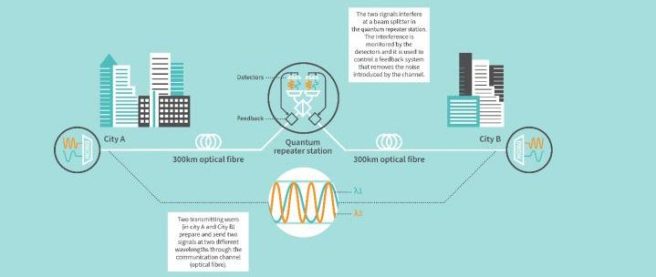


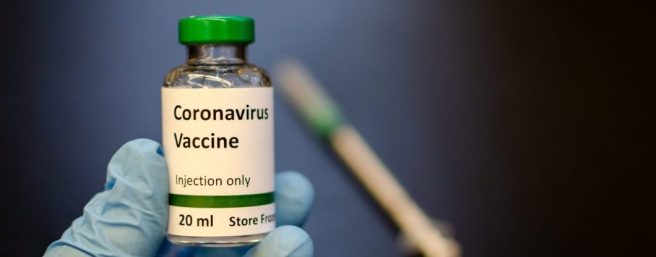


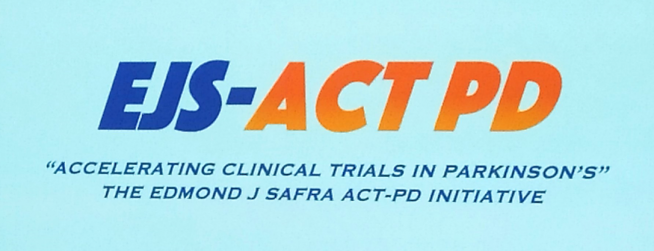



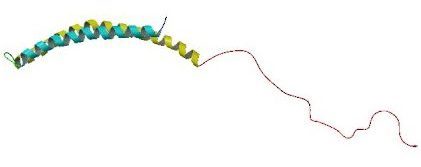



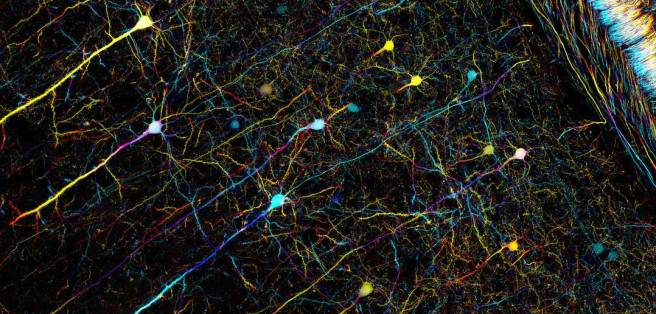
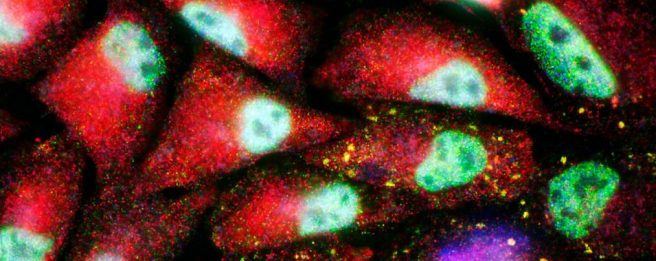


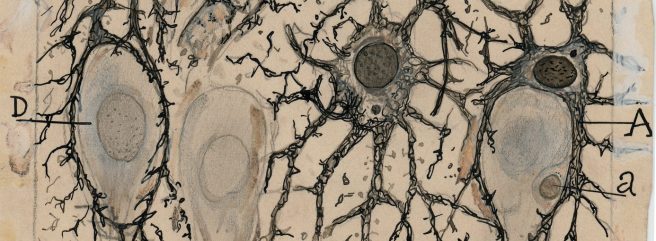




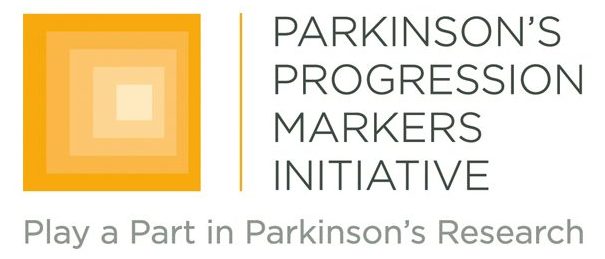







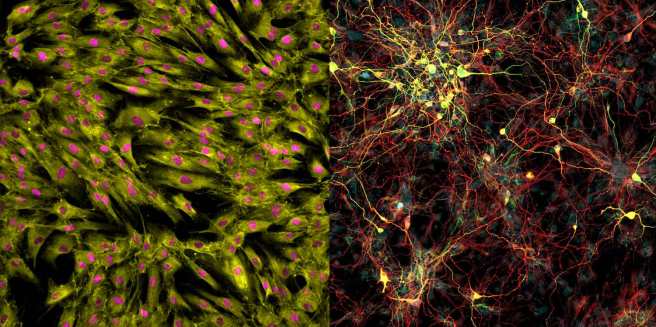
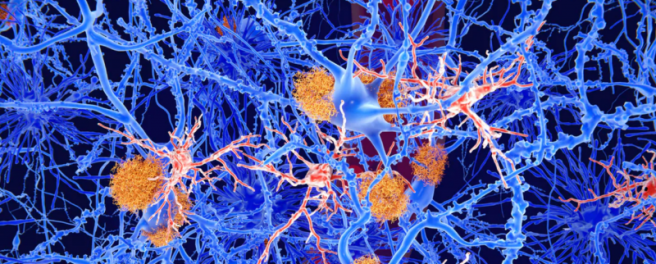
As always . . . informative and enlightening! Just wondering why no comment or mention of encouraging Annovis Bio clinical trial results that were recently released.
LikeLike
Hi Dave,
Thanks for your comment & question. Management of expectations is always on our mind here at the SoPD. The most recent Annovis press release is not being mentioned because drip feeding results from an ongoing Phase 2a study via press releases is not appropriate behaviour for any investigator/sponsor, and should not be encouraged. And it certainly shouldn’t be accepted as some kind of new norm. In addition, the data presented is only from the first 14 participants in this short (25 days) study. Releasing data early in ongoing studies raises the risk of introducing bias, and only really serves capital/share price raising efforts (as opposed to helping the PD community). We will of course be happy to address the final results once the study is complete, but until then I hope you understand our position.
Kind regards,
Simon
LikeLiked by 2 people
Hi could you please help, I wonder if water based ststins are better for my husband that the fat based one (Astorvastatin ) he is on at the moment. Thank you Sharon
LikeLike